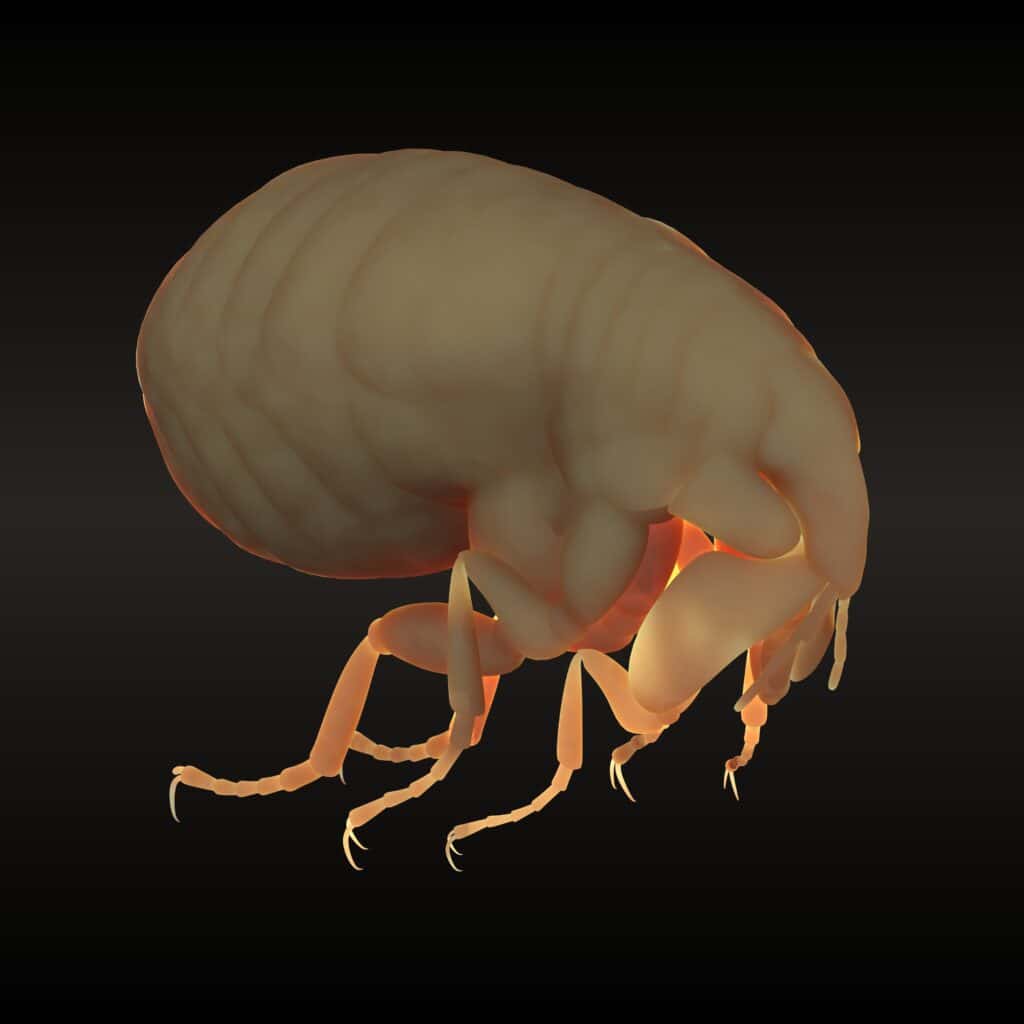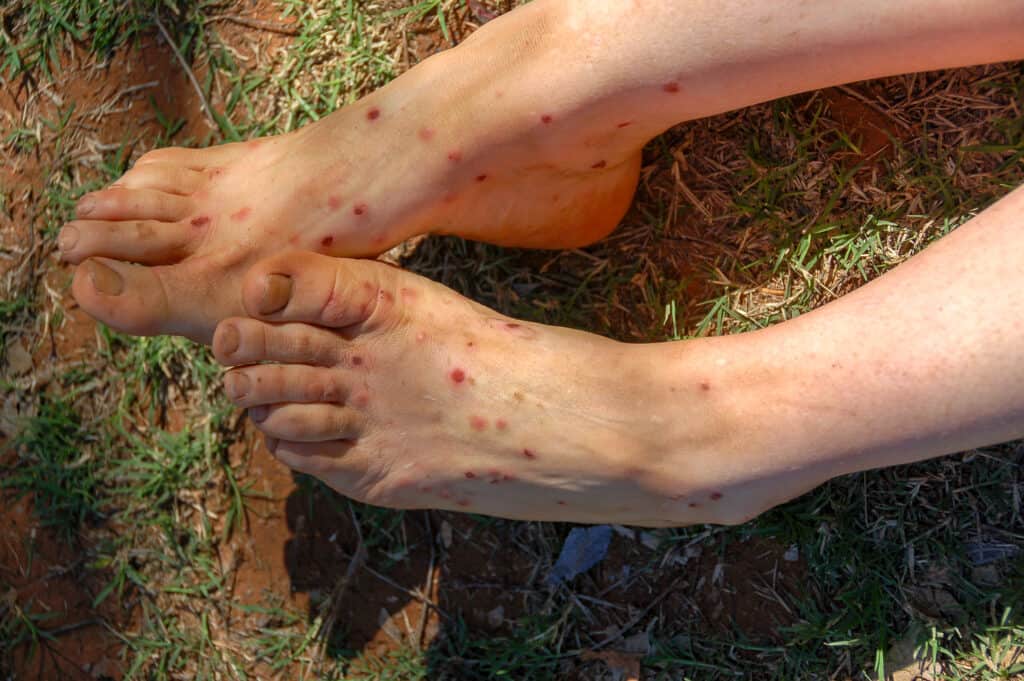What are sand fleas? You’re probably getting itchy just thinking about them, but the animal we call a sand flea, doesn’t even bite! However, it’s easy to confuse sand fleas, also known as mole crabs, with sand flies and jiggers, both of which have nasty, painful bites.
Are sand fleas insects or crustaceans?
Ready to learn more? Keep reading!
Types of Sand Fleas
There are three different animals that are considered sand fleas, and they all have multiple names. These are the chigoe flea, sandfly, and sand crab. They are all very different, but easily confused because of their names.
Chigoe Fleas/Jiggers
Chigoe fleas, also known as jiggers, sand fleas, and burrowing fleas are the smallest fleas, measuring up to 1mm (0.03 inch). They are native to Central America and South America, but chinos fleas have spread to some areas in Sub-Saharan Africa. These parasitic insects’ bites cause infections. Feet are their primary area of attack, as chigoe fleas are sand dwelling insects, and are common on beaches where people tend to be barefoot. As their name suggests, they burrow 2-5 cm (0.5 -2.0 inches) below the sand. Infestations are less common during wet and rainy seasons.
So, are chigoe fleas dangerous? They are parasites, so they can be. The female chigoe flea bites and digs, head first, into a host’s skin to lay her eggs. Once she has burrowed underneath the skin, the male chigoe flea joins her. After procreating, the male chigoe flea dies, as the female swells with thousands of eggs. The female lays her eggs before dying beneath the skin and rotting, which can cause the infection tungiasis.

Chigoe fleas are native to Central America and South America.
©3drenderings/Shutterstock.com
Sandflies/Biting Gnats
Like chigoe fleas, sandflies are insects, but they look very different. They look more like a long mosquito instead of a flea. These flies typically stop growing at 3mm (1/8 inch) and bite people and animals, sucking their blood through four sharp piercing cutters. Y
Sandflies are found around the globe including New Zealand, Central Africa, and the Caribbean. Biting gnats are also sometimes nicknamed no-see-ums.
Biting gnats can be frustrating since they are so small that they can squeeze through screes and other tiny openings. They bite their hosts leaving small red bumps that can be itchy and distracting for up to a week.

Sandflies bite their hosts leaving small red bumps that can be itchy and distracting for up to a week.
©Andrew Atkinson/Shutterstock.com
Sand Crabs/Mole Crabs
Last but not least, we have sand crabs, also known as mole crabs. Although they are often referred to as sand fleas, they aren’t insects at all, but crustaceans. Mole crabs are related to crabs and shrimp. They are small, rarely growing over 2.5-5 cm (1-2 inches) long. Unlike other animals, female mole crabs are larger and contain more meat. These small creatures don’t bite humans or suck blood, unlike fleas. Anglers catch sand crabs or buy them from bait shops to use to catch common fish near the surf.
You can find sand crabs easily by going to a beach on the Pacific or Atlantic with white fluffy sand. Sometimes, you can spot their small antennas above the sand, scurrying quickly underneath. The shells that protect their bodies are yellow, brown, black, white, and orange. Birds love to prey on sand crabs since they are small and defenseless. They are egg-shaped with a smooth outer shell.

Sand fleas are egg-shaped with a smooth outer shell.
©iStock.com/Jaimie Tuchman
Up Next:
The photo featured at the top of this post is © iStock.com/Vinicius-Moreira
Sources
- cdc.gov, Available here: https://www.cdc.gov/dpdx/tungiasis/index.html
- ecdc.europa.edu, Available here: https://www.ecdc.europa.eu/en/disease-vectors/facts/phlebotomine-sand-flies
- ufl.edu, Available here: https://entnemdept.ufl.edu/creatures/misc/flies/lutzomyia_shannoni.htm
Thank you for reading! Have some feedback for us? Contact the AZ Animals editorial team.






